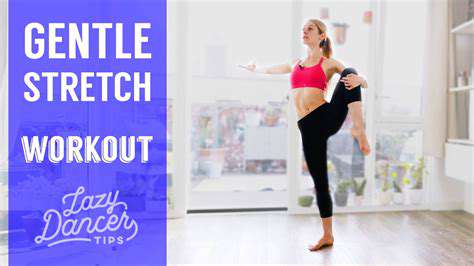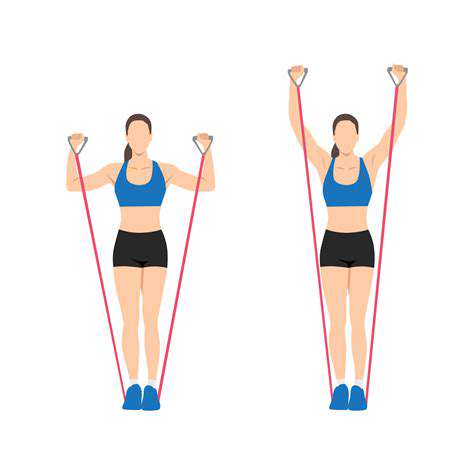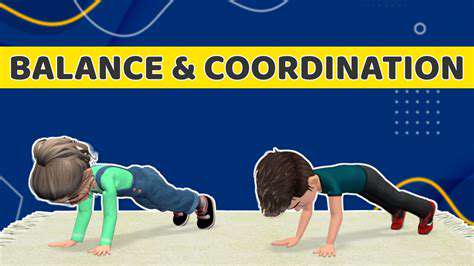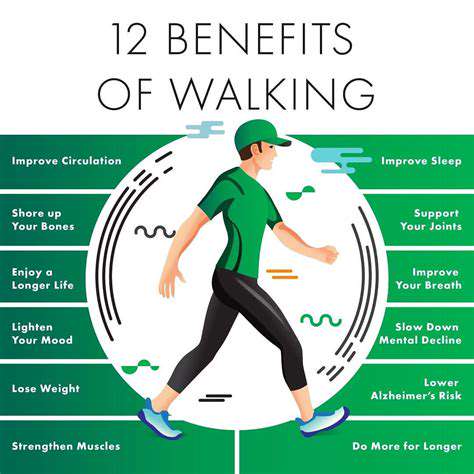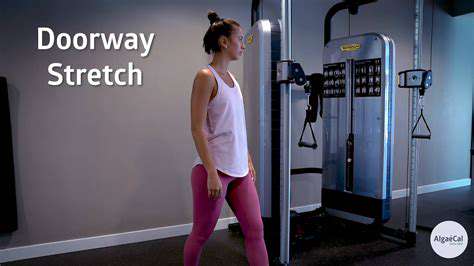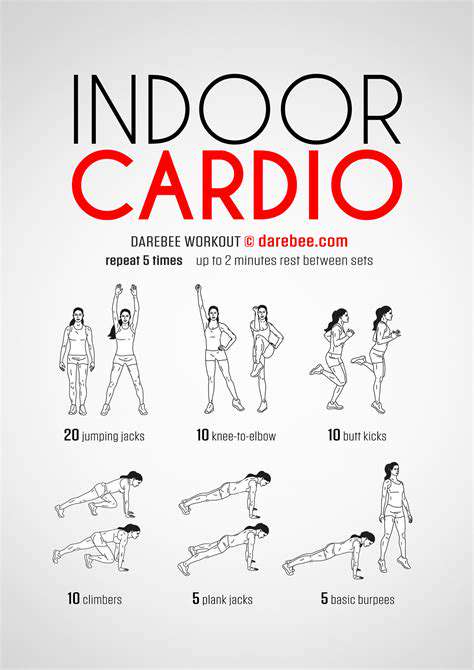Leg Stretches for Seniors: Improving Lower Body Flexibility
Calf Stretches to Combat Stiffness
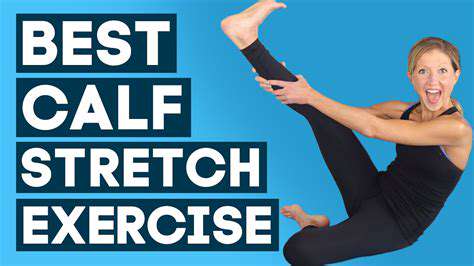
Warm-up Importance
Before embarking on any stretching routine, a proper warm-up is crucial. This prepares your muscles for the upcoming activity and reduces the risk of injury. A brisk walk or some light cardio, such as jumping jacks or high knees, can efficiently elevate your body temperature and increase blood flow to the muscles. This improved blood circulation will help loosen the muscles, making them more pliable and receptive to stretching.
A good warm-up is essential to prevent muscle strains and tears. By gradually increasing your body's temperature, you're essentially preparing your muscles for the stretch, allowing for a more effective and safe stretching session.
The Importance of Proper Form
Maintaining correct posture and form during calf stretches is paramount. Rushing or forcing the stretch can lead to injury. Focus on keeping your back straight and your core engaged. This ensures that the stretch is targeted at the calf muscles and not other areas, minimizing the risk of overextension or strain.
Poor form can lead to injury and exacerbate existing pain. A slow, controlled movement is key to achieving the desired stretch without putting undue stress on your joints.
Standing Calf Stretch
This classic stretch targets the gastrocnemius and soleus muscles, the primary muscles in your calf. Stand facing a wall or a sturdy object, placing one foot slightly behind the other with your heels on the ground. Keep your front leg straight and lean into the stretch, feeling the stretch in your calf. Hold the stretch for 15-30 seconds, repeat on the other leg, and repeat the process multiple times.
Maintaining a stable posture during this stretch is crucial for maximizing effectiveness and minimizing the risk of injury.
Seated Calf Stretch
This alternative stretch can be beneficial for those with limited mobility or those who prefer a more comfortable position. Sit on the floor with your legs extended straight out in front of you. Loop a towel or strap around the ball of one foot and gently pull your toes towards you, keeping your knee straight. Feel the stretch in your calf, hold it for 15-30 seconds, and repeat on the other leg.
This stretch is particularly helpful for targeting the soleus muscle, which often gets neglected in other stretching techniques.
Heel Drop Stretch
This stretch can be performed against a wall or a sturdy object, focusing on the soleus muscle located lower in the calf. Place one foot on a raised surface, such as a step or a curb, with your heel hanging off the edge. Keep your front knee straight and slowly lower your heel toward the ground, feeling the stretch in your calf. Hold the stretch for 15-30 seconds, repeat on the other leg, and repeat the process multiple times.
This variation emphasizes the soleus muscle, an often-overlooked area for stretching.
Cool-down Importance
Just as a warm-up is crucial before stretching, a cool-down is equally important afterward. A cool-down helps your body return to its normal state, gradually reducing your heart rate and blood pressure. Light cardio, such as a slow walk, and static stretches, such as holding the calf stretches for a few more repetitions, are excellent choices for a cool-down. This helps prevent muscle soreness and stiffness.
A proper cool-down is essential to aid in recovery and reduce post-exercise muscle soreness.
Hip Flexor Stretches and Benefits

Understanding Hip Flexor Stretches
Hip flexor stretches are crucial for maintaining healthy posture and mobility, particularly for individuals who spend extended periods sitting or engaging in activities that involve repetitive hip flexion. These muscles, located at the front of the hip, are essential for activities like walking, running, and climbing stairs. Regular stretching helps improve flexibility and range of motion in the hips, preventing stiffness and potential injuries. Understanding the specific muscles involved and proper stretching techniques is vital for maximizing the benefits while minimizing the risk of strain or tears.
A thorough understanding of the anatomy of the hip flexors is key to effective stretching. These muscles, including the iliacus and psoas major, play a critical role in hip flexion and stability. By understanding their function, you can tailor your stretches to target these specific muscles and improve their flexibility, promoting overall hip health. Proper stretching techniques involve maintaining a comfortable position and holding each stretch for a sufficient duration to allow for muscle relaxation and improved elasticity. Consistent stretching practice will not only enhance flexibility but also contribute to overall physical well-being.
Benefits of Regular Hip Flexor Stretching
Regular hip flexor stretching offers a multitude of benefits that extend beyond increased flexibility. Improved posture and reduced back pain are significant advantages, as tight hip flexors can contribute to an anterior pelvic tilt, which in turn can lead to lower back discomfort. Stretching these muscles can help restore proper alignment, resulting in a more upright posture and potentially reducing back pain.
Enhanced athletic performance is another important benefit. By improving hip flexibility and strength, stretching can increase stride length and efficiency in activities like running and cycling. This improved range of motion can translate to a significant boost in performance, allowing athletes to move more freely and powerfully. Beyond athletic performance, regular stretching can also positively influence daily activities such as walking, climbing stairs, and even sitting more comfortably. This improved mobility can make everyday tasks easier and more enjoyable.
Stretching also promotes better blood flow to the hips and surrounding areas. This improved circulation can aid in muscle recovery and reduce the risk of soreness and stiffness. The overall benefits of consistent hip flexor stretching extend to improved physical function and reduced risk of injury across various activities.
Types of Hip Flexor Stretches
A variety of stretches target different aspects of hip flexor mobility. The lunge stretch is a common and effective technique that focuses on stretching the iliopsoas muscle. Proper form is crucial, ensuring the front knee is directly over the ankle and the back knee is close to the ground. Holding this stretch for 30 seconds to a minute can significantly improve flexibility.
The kneeling hip flexor stretch is another beneficial option. Start in a kneeling position with one leg extended forward and the other knee on the ground. Leaning forward from the hips, you can feel the stretch in the front of the hip. Holding this position for 30-60 seconds, focusing on maintaining proper posture, can provide a targeted stretch for the hip flexor muscles. Combining these stretches with other exercises and a balanced routine can maximize the benefits of improved hip flexibility.
The standing hip flexor stretch targets the same muscle group but in a standing position, making it more accessible for daily use. This variation involves bringing one knee towards your chest while keeping your back straight. Holding this position for 15-30 seconds, focusing on maintaining a neutral spine, is effective for improving flexibility. Different stretches cater to various needs and preferences, allowing individuals to choose the most suitable techniques for their specific goals and body types.
